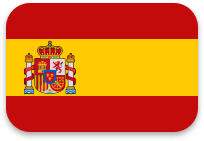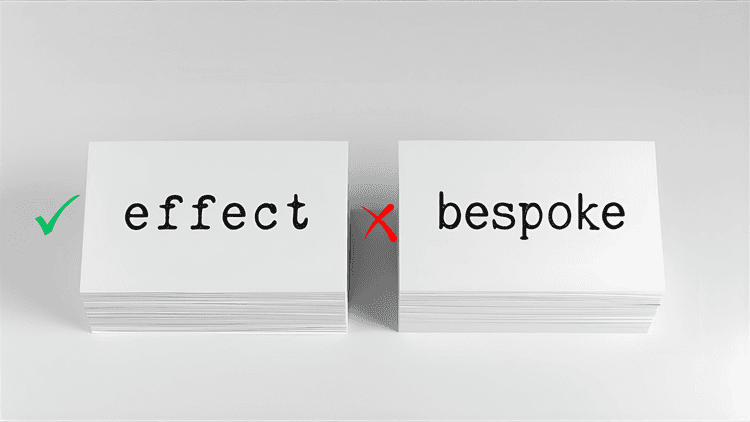Have you noticed the lines over some Spanish letters? They're called accent marks. Together with the tilde sign and diaeresis, the symbols are called "diacritics." Learners often find the Spanish accent marks an unnecessary nuisance. Why would they need to complicate an otherwise easy language to learn? Believe it or not, native speakers use them in daily communication, sometimes with the help of autocorrect. Moreover, these symbols are less intimidating if you know why they're needed in the first place, which letters they go on, and how to memorize them more easily. Let's dive right in!
What Are Spanish Accent Marks?
The acute accent mark in Spanish is a line tilted from left to right, positioned over a vowel, for example, á, é, í, ó, and ú. In the case of the letter "i," the accent starts from where the dot would be placed. Accent marks play an important role in changing the pronunciation of a word and clarifying its meaning. Spanish has a fair share of words that look almost identical but differ in meaning. That's one situation when accents come in handy by changing how one of the words looks.
Two more types of marks don't exactly fall in the category of "accents," namely "ü" and the iconic "ñ" ("eñe"). In the first case, we have a diacritical mark called a "diéresis" or "crema." The famous "ñ" (enne) uses a "tilde" to represent the palatal nasal sound. The "ñ" is more than a letter with a diacritic - it's a distinct letter representative of the Spanish language. It has a special place in the spanish alphabet, between the letters "n" and "o." None of the other Spanish letters with accents enjoys having a spot in the Spanish ABC.
Why the Spanish Language Uses Written Accents
As you may have noticed, Spanish is not the only Romance language using accent marks. French, Italian, and Portuguese also have accents. Unique signs added to a letter called "diacritics" come from Greek and Latin. Some of the first traces of Spanish accent marks are recorded between the 12th and 15th centuries. The well-known "ñ" has historically evolved from the need to abbreviate "nn" so that "anno" became "año." Between the 18th and 20th centuries, The Royal Spanish Academy officially standardized accents.
There are two major reasons to use Spanish accents:
1) To Show Word Stress
Spanish has specific pronunciation rules. The words ending in vowels, "n" or "s," have the penultimate (second-to-last) syllable stressed: "casa," "joven." In other words, the stress falls on the last syllable: "feliz" ("happy"), "papel" ("paper"), and "hablar" ("to speak"). Accent marks show readers which syllable is stressed when there are exceptions from the general rules. Some examples are "exámenes" ("exams"), "compró" ("bought"). The stressed syllable is marked by the accent, not the reading rules.
2) To Differentiate Between Homophones
A significant role of accents in Spanish is to tell homonyms apart. Homonyms are words spelled identically but different in meaning. So, the acute accent helps by making a visual difference between homonymous words. For instance, "círculo" with an accent translates as "circle," while "circulo" without an accent means "I circulate." Another example is "ejército." When it has an accent, we translate it as "army," while "ejercito" without an accent means "I exercise." Other popular examples of homophones include the following:
- "más" ("more") vs "mas" ("but");
- "té" ("tea") vs "te" ("you");
- "cuánto" ("how much") vs "cuanto" ("as much")
- "papá" ("dad") vs "papa" ("potato");
- "sí" ("yes") vs "si" ("if");
- "él" ("he") vs "el" ("the");
- "tú" ("you") vs "tu" ("your");
- "aún" ("still") vs "aun" ("even");
- "mí" ("me") vs “mi” (“my”);
- "dé" ("give") vs “de” (“of”);
- "término" ("term") vs "termino" ("I finish");
- "público" ("public") vs "publico" ("I publish");
- "sílaba" ("syllable") vs "silaba" ("he/she silences").
Spanish accent marks help readers better understand written text, removing ambiguity. On top of that, acute accents indicate word stress, ensuring correct pronunciation.
Speak a new language with confidence!
Build fluency faster with FunEasyLearn — just 10 minutes a day is enough to make real progress.
How to Type Spanish Accent Marks
One of the most common questions regarding Spanish accent marks is how to type them. Naturally, most modern communication happens online. See the table below for information on how to get the acute accent and other diacritics across any device.
| Character | Windows | Mac | Smartphone |
|---|---|---|---|
| á, é, í, ó, ú | Alt+0225 to 0233, or ' + vowel | Option+e + vowel | Long-press vowel |
| ñ | Alt+0241, or ~ + n | Option+n + n | Long-press n |
| ü | Alt+0252, or " + u | Option+u + u | Long-press u |
Tip: For Windows/Mac users, activating the US International keyboard (via Settings, Language) provides the most efficient method for frequent Spanish typing. Mobile users can add the Spanish keyboard for auto-correction support and faster typing speed.
Tips to Master Accent Marks in Spanish

Understanding Spanish accent marks helps with fluency and better readability and plays a crucial role in avoiding ambiguity. See the tips below to become a master of Spanish accent marks.
Tip #1. Learn all Question Words Together with the Statements
One easy rule to remember is that question words need an accent in direct and indirect questions or exclamations. They lose their accent when used as statements. Notice the changes in the examples below:
- "¿Quién?" ("Who?") vs "quien" ("who");
- "¿Dónde?" ("Where?") vs "donde" ("where");
- "¿Cómo?" ("How?") vs "como" ("as/like");
- "¿Cuál?" ("Which?") vs "cual" ("which");
- "¿Cuánto?" ("How much/many?") vs "cuanto" ("as much/many");
- "¿Por qué?" ("Why?") vs "porque" ("because");
- "¿Adónde?" ("To where?") vs "adonde" ("to where").
#Tip #2. Pay Attention to Accents When Learning Verb Tenses
Be mindful of patterns when learning different tenses. You will notice that verbs in the past tense often use an accent, while those in the present tense don't require one.
Examples:
- "habló" ("he spoke") vs "hablo" ("I speak");
- "comió" ("he ate") vs "como" ("I eat");
- "vivió" ("he lived") vs "vivo" ("I live);
- "caminó" ("he walked") vs "camino" ("I walk/road");
- "preguntó" ("he asked") vs "pregunto" ("I ask").
Another interesting case is the difference between a verb form and another part of speech. When in doubt, remember that the word with an acute accent is usually a verb.
Examples:
- "está" ("he is") vs "esta" ("this");
- "sé" ("I know") vs "se" ("oneself");
- "dé" ("give," subjunctive) vs "de" ("of");
- "fórmula" ("formula") vs "formula" ("he/she formulates");
- "médico" ("doctor") vs "medico" ("I medicate").
Tip #3. Make Lists of Minimal Pairs
Minimal pairs are words with a subtle difference in sound but a huge difference in meaning. An example in English would be the pair "live" vs "leave." In some contexts, such as a hospital, it's critical to understand whether a patient doesn't want to leave or doesn't want to live. These pairs are crucial when learning a new language, helping you pay attention to tricky words and expressions. A list of minimal pairs that you often use can make your life much easier.
Examples:
- "casa" ("house") vs "caza" ("hunt");
- "vino" ("wine") vs "vivo" ("I live");
- "plato" ("plate") vs "plata" ("silver/money");
- "nada" ("nothing") vs "nata" ("cream");
- "súbito" ("sudden") vs "subito" ("I subside");
- "máscara" ("mask") vs "mascara" ("he/she chews");
- "árbol" ("tree") vs "arbol" ("I sail");
- "cálido" ("warm") vs "calido" ("I heat up").
Learn Spanish with FunEasyLearn

The Spanish language-learning course is among the most popular on the FunEasyLearn app. The 350+ topics are part of a well-structured learning pathway, making progress through the 10 proficiency levels easy.
⛳ Learn Accent Marks in Context
See accent marks and other diacritics when learning the alphabet, studying with flashcards, and practicing with engaging activities. Learning in context helps you better memorize new words, phrases, and expressions. The audio files, recorded by native speakers in professional studios, help you train a Spanish accent. Repeat the new words after the speaker and get instant feedback on how you did.
📚 Build a Robust Vocabulary in Spanish
FunEasyLearn is best known as a vocabulary builder. In fact, it's one of the best vocabulary builders on the market. With an impressive collection of 34 language courses taught from 62 native languages, the app is a versatile pocket companion. Busy language learners worldwide can easily fit 10-20 minutes of practice into their daily routine. Microlearning, feeding you bite-sized lessons, can turn waiting in line into a quick vocabulary review session.
🕹️ Practice with 30+ Language Learning Games
Learning by playing is not only satisfying but also practical. Your brain memorizes new information better and stores it for longer when relaxed. That's one of the reasons children effortlessly learn new languages when playing. Reinforce retention with matching exercises, filling in the blanks, building sentences, and more. The games are designed to train the four basic language-learning skills - reading, writing, listening, and speaking.
Would you like to speak Spanish with confidence?











